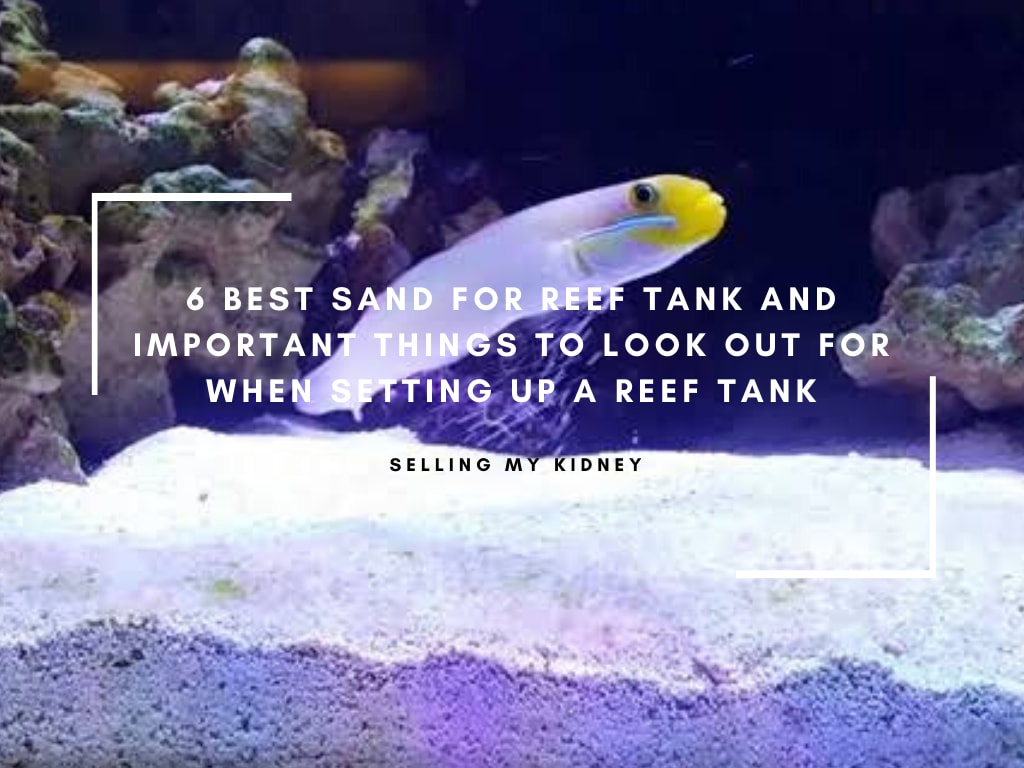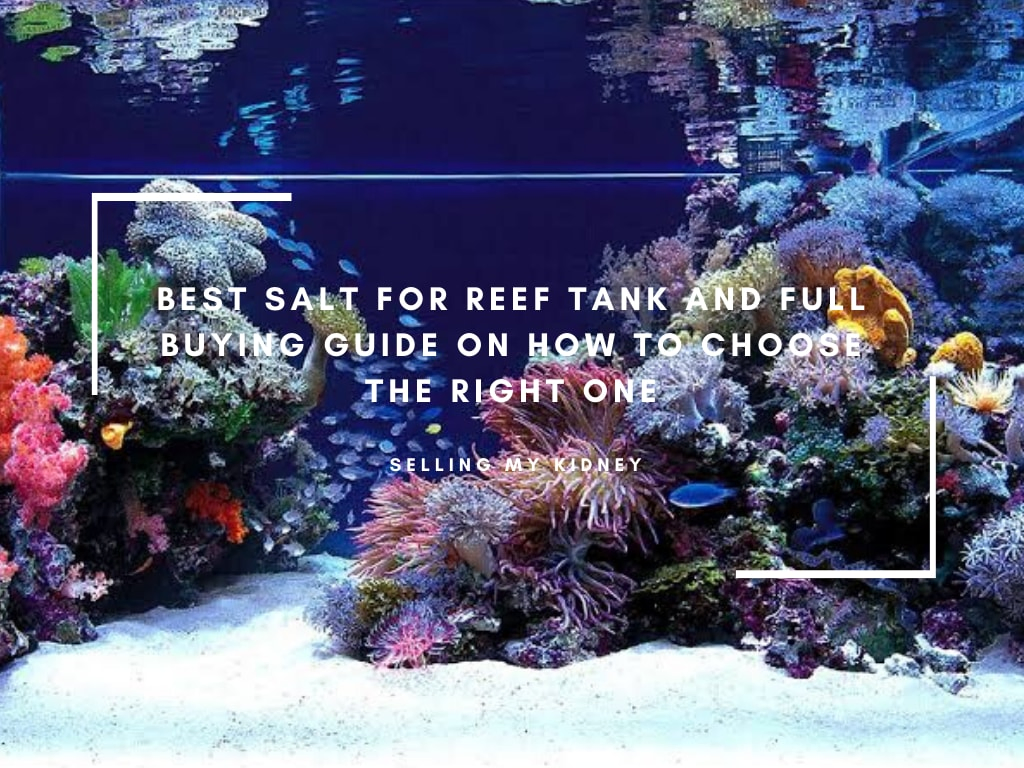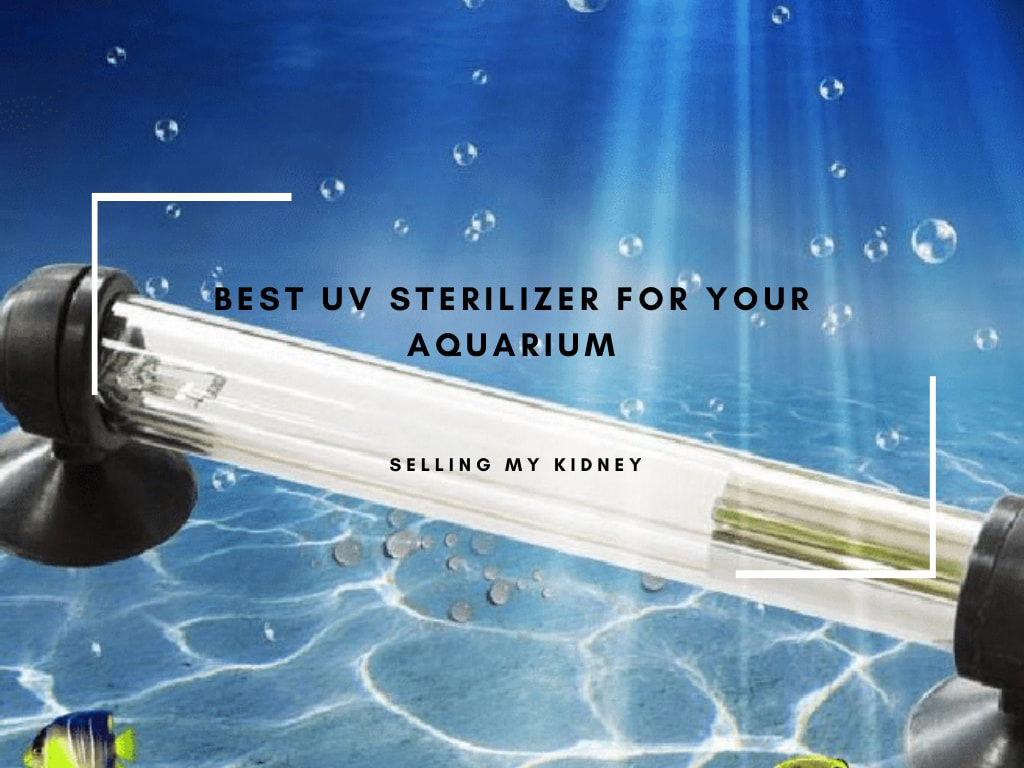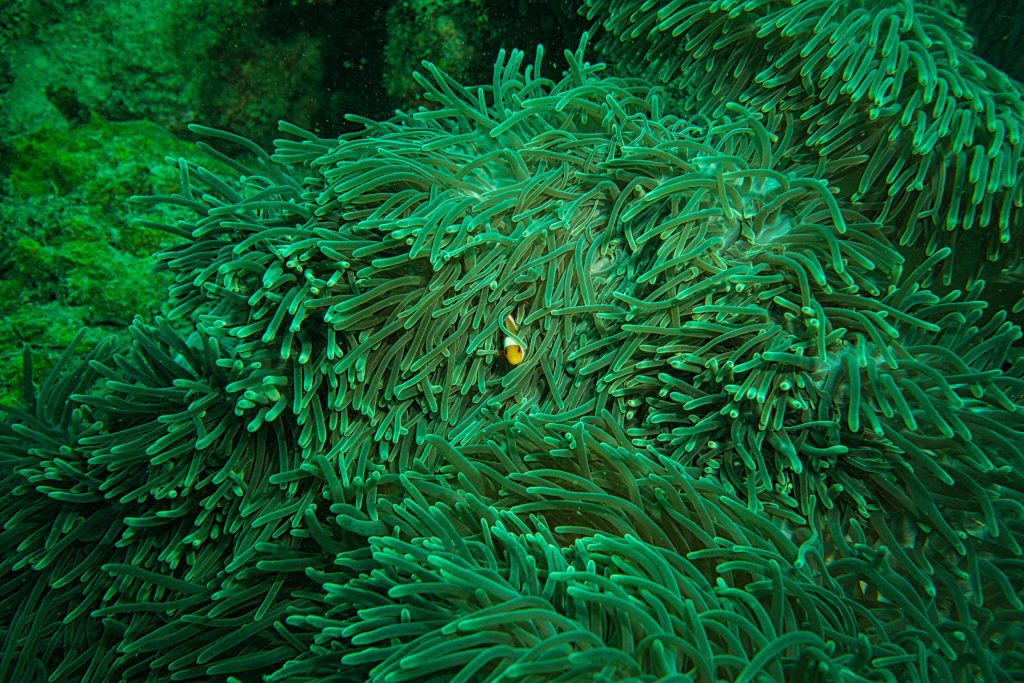Protein skimmers are an important piece of equipment to any expert aquarium owner.
These machines help keep organic wastes under control. They are crucial for maintaining good water quality.
While some might associate them with professional water treatment or public aquariums, seasoned hobbyists know the importance of having a HOB protein skimmer in your tank.
Although you might find the specifications to come across confusing, finding the best HOB protein skimmer is easier than you think.
So you recognize these top-rated HOB protein skimmers?
Product Name | Aquarium Size | Rating | Price |
|---|---|---|---|
| AquaMaxx HOB-1.5 | Up to 60-90 gallons | ||
| CoralVue Technology BH- 1000 Octopus (w/pump) | Up to 100 gallons | ||
| Reef Octopus Classic 100-HOB | Up to 105 gallons | ||
| Coralife Super Protein Skimmer (w/pump) | Up to 65, 125, or 220 gallons | ||
| Bubble Magus QQ1 Hang-On Nano | Up to 25 gallons |
Best HOB Protein Skimmers for Saltwater
1. AquaMaxx HOB-1.5 Hang-On-Back Protein Skimmer
- This HOB protein skimmer by AquaMaxx is easily the top of its class. You won’t find this kind of quality in your typical consumer model. The highlights of the product are the sheer quality and ease of set up.
- Compared to other devices, this is relatively simple to figure out. The design is made so that even a novice could work their way around it.
- The look of it is not just a comment on simplicity. This protein skimmer is very aesthetically pleasing.
- It is minimalist and colorful. The less industrial design makes it more appealing to those who don’t want this protein skimmer hanging out of the tank.
- It was designed to take on both high and low bioloads. (Although this will interfere with maximum tank size).
- For moderate to light bioloads, this device has a limit of about 90 gallons. For higher levels, this tolerance drops to about 60.
- Although most competitors don’t mention the change of limitations due to load size, reduced filtration ratings also apply. AquaMaxx is just being transparent.
- A vast majority of customers reported that the device lived up to its standards.
- It breaks in quickly and is incredibly durable.
- As they say, you get what you pay for. This skimmer is rather expensive, considering its limitations.
- Additionally, it’s tall dimensions make it somewhat difficult to put into some sumps.
- Overall, these were minor, expected things.
- Customers were pretty satisfied with the performance. The AquaMaxx HOB- 1.5 hang-on-back protein skimmer really takes down the competition.
Notable Features
- This product demonstrates an elite level of performance.
- The unique, well-designed device is aesthetically pleasing.
- This product is easy to install and maintain, regardless of your experience.
- Customers report minimal tuning was required, and it had a short break-in period.
- This product is built to last and is incredibly durable.
Pros
- High degree of performance
- Easy to use
- Good for beginners
- Looks nice
Cons
- Expensive
- Too tall for most sumps
2. CoralVue Technology BH-1000 Octopus with External 1000 Pump for Aquarium Filter, 100-Gallon
- This is also a considerably pricy model, but it is built to last.
- With slighting higher filtering power than the past model, it can filter up to 100 gallons.
- Although it is not as conventionally pretty as the previous model, it has a very sleek appearance.
- What it lacks in pizazz, it makes up for in being practical.
- The compact size takes up much less space at the back of your aquarium than other protein skimmers.
- If you really don’t want to have to see this pump on your tank, it is a little more sump-friendly.
- The CoralVue model comes partially assembled and with clear instructions/ instructional video.
- The simplistic design is great for aquarium hobbyists who are tired of messing around with other skimmers.
- The design is built with convenience in mind. It is very easy to clean and maintain.
- You can easily dismantle it when necessary without worrying about struggling to put it back together.
- The clear acrylic is a little more traditional. It also helps make it less apparent when you look at your tank.
- People have also reviewed this product as relatively quiet, meaning you won’t have to deal with all of those mechanical sounds in the background.
- Aesthetics aside, it is a very effective system. The performance has been praised, and many find the product worth the investment.
Notable features
- This product demonstrates excellent performance.
- Set-up and tuning are easy for those with some background.
- Customers report it is incredibly quiet for a skimmer of this size.
- This skimmer is more compact, meaning it is less distracting, takes up less space, and can be easily installed into a sump.
Pros
- Great performance
- Easy installation
- Easily dismantled
- Compact size
- Sump friendly
Cons
- Expensive
- Not as “beginner-friendly” as others
3. Reef Octopus Classic 100-HOB Protein Skimmer
- Starting to look at more budget-friendly models, the Reed Octopus Classic offers the most for your dollar.
- It still offers a higher level of quality while simultaneously being relatively inexpensive. The product also has an impressive filtration level for tanks up to 105 gallons.
- Something important to remember is that you can use a skimmer meant for a larger side.
- For example, you can use the same HOB protein for a 55-gallon take that is marketed for 100-gallon tanks.
- The only thing you need to watch out for is that the size works with your aquarium.
- Considering the sheer level of performance offered by this product, you are better off investing in this product than a cheaper model made for a smaller tank.
- The sizing of this model is decent, making it sump friendly. The only downside to the compact size, in this case, is that some people feel the size of the collection cup does not match the performance of the tank.
- This can lead to overflow and leaking if you’re not careful, so it requires you to keep a little more of an eye on it. Overall, this is a minor problem that most people can happily overlook considering how cost-effective this protein skimmer is.
Notable features
- It has a high level of performance for a “budget-friendly” device.
- The skimmer is compact and quiet, allowing it to go unnoticed in a set-up.
- It is an effective device for larger tanks.
Pros
- Best value for your money
- Budget-friendly
- Compact size
- High filtration rate
- Quiet
Cons
- Some overflow problems with the small collection cup
- Break-in period a little longer
4. Coralife Super Protein Skimmer with pump
- This particular coralife model comes in a variety of sizes that can compensate for nearly any hobbyist tank size.
- With models targeting up to 65, 125, and 220 gallons, this product has the highest filtration capacity on the list.
- Although it may not be as pretty as the other contenders on the list, it is made to be used with a sump or the back of an aquarium.
- It has a unique design using patented needle wheel aspiration systems and has a special diffuser to prevent the microbubbles from getting into your main aquarium. This product is also pretty inexpensive, but it doesn’t offer the same level of performance as the more expensive contenders.
- Still, it provides more than enough for a person on a budget. You just need to be patient with the break-process. The collection cup is large, which helps prevent overflow and makes it super easy to clean.
- The instructions are a little more complicated, but they are still easy to figure out.
Notable features
- Reviewers were very satisfied with the phenomenal customer service, which was offered.
- This skimmer comes in several different filtration ratings to fit your needs.
- One of the highest-rated products for consumer-level skimmers which can accommodate tanks over 120 gallons.
- It has a patented design and a diffuser to keep microbubbles out of your aquarium.
Pros
- Decent performance
- Inexpensive
- Can accommodate larger aquariums
- Great customer service
Cons
- Aesthetically distracting and bulky
- Set-up can be confusing
- Takes some time to set-up and break-in
5. Bubble Magus QQ1 Hang-On Nano
- This compact little skimmer is perfect if you have an incredibly small tank. Water quality is much harder to stabilize in smaller tanks, emphasizing the importance of incorporating one into your tiny setup.
- This model works with aquariums up to 25 gallons. It offers just the basics, which is all you really need. Aesthetically, it is rather industrial looking, which may turn some people off to the product, but it is relatively effective and can help keep your water clear.
- Just make sure to let the product break-in before you judge it. This can take a little longer than some of the other models.
- Overall, customers have reported that they were very happy with the results.
- Having a smaller skimmer allows you to keep your equipment within budget and reduce some of the setbacks involved with getting one meant for a larger tank.
- For one, the compact size is ideal for space conservation (which is crucial in smaller aquariums). It also is super quiet and easy to set-up. Compared to other nano skimmers on the market, this is the best investment you can make.
Notable features
- Great performance for such a tiny machine.
- It one of the highest-rated skimmers which can be used in nano aquariums.
- This skimmer is very small, saving as much space as possible.
- Very simple and straightforward set-up and tuning.
Pros
- Adequate performance
- Affordable
- Ideal for nano saltwater set-ups
Cons
- Does the bare minimum
- Limited to only small tanks
Protein Skimmer FAQ
What is a protein skimmer?
A Protein skimmer, or foam fractionator, is a device used to help keep the water clean.
They remove specific organic compound which would otherwise pollute your aquarium.
These are considered a staple in saltwater set-ups.
How do protein skimmers work?
They work by utilizing the properties of the organic molecules themselves. Proteins are found in all organic compounds.
By using the natural polarity of these proteins found within waste products (such as excess food), bubbles can be used to get them out of the tank.
Most skimmers accomplish this by creating a large interface between water and air. This is done by using very tiny bubbles.
The particles cling to the miniature bubbles and get carried to a collection cup -out of your tank water.
Protein skimmers aim to carry the unwanted waste away before it has the chance to decay and release nitrogen compounds, which would have detrimental effects on water quality.
Do I really need a protein skimmer?
Although some setups advertise as skimmer-free, it is not suggested to skip out on one.
An aquarium can run without one, but many people that try it und up turning to this device to spruce up fish health and water clarity.
Protein skimmers are incredibly important in keeping a balanced aquarium. This is especially the case when it comes to marine setups.
For a reef tank to thrive, you NEED to keep nitrate levels to an absolute minimum.
It is almost impossible to maintain a tank with coral without one.
Corals are very sensitive to water quality (and are very expensive to replace). They need certain conditions kept as clean and stable as possible.
Can you use them in freshwater tanks?
Things get a little more complicated in freshwater tanks.
Due to the differences in nature between salt and freshwater, protein skimming is not as effective in freshwater.
Although it can be accomplished in commercial settings, it is not worth it to purchase a protein skimmer for your tiny tank at home.
How do you set up a HOB protein skimmer?
Protein skimmers are much different in commercial settings due to their sheer size (like most water treatment equipment).
The protein skimmers you need for your tank at home usually are HOB -or “hang on back.”
There are some you protein skimmers you can store under if you have a sump.
Protein skimmers need to be kept above the water level to work.
The easiest way to do this is to hang the protein skimmer on the back of your tank.
Although some can be internal, external protein skimmer setups are more common so that you don’t compromise the look or space of your tank.
When setting these up, consider the following steps:
1. Read the instructions
- Every protein skimmer is a little different. You must familiarize yourself with yours.
- There will be differences in things like ideal depth, restrictions, power.
- Make sure this is the right protein skimmer for your personal aquarium.
2. Check for parts
- Protein skimmers have a lot of parts included. It is not uncommon for a part to be left out by accident or slightly defect.
- You want to make sure that you look at all of this before your skimmer is set up.
- Yes, it is tedious, but it is better than dealing with missing parts when it’s too late.
3. Hang up the protein skimmer
- Now that everything looks like it’s in its place, it’s time to position the skimmer.
- Make sure it is submerged at an ideal depth (this will be specified in the manual).
- It should fit right on the edge of your tank as though it’s another filter.
- Put it somewhere that works well for you. If you are unhappy having it visible on the top of the tank, consider setting up a sump.
4. Let it get filled with water
Water should begin to flow into it (similar to when you set up a filter).
5. Plug it in
- Turn the power on. The noise will quiet down over time, and it should be done “breaking in” after a couple of days.
- Some hobbyists suggest letting it run in a tub of water with distilled white vinegar to help speed up the process of breaking in.
6. Monitor foam levels
- Make sure to watch the foam levels of the protein skimmer. If they begin to rise above the limits, shut it off for a bit.
- Try to tune it so that it is right for you.
7. Keep it clean
- As you can imagine, protein skimmers get dirty pretty quickly.
- To keep your skinner in tip-top shape (and prevent your tank from smelling), clean out the collection cup a few times a week.
You should only have to clean the entire device once every 6 months.
How do you tune a HOB protein skimmer?
When you set up a protein skinner, you need to tune it.
For this device to work, the foam needs to bubble up into the collection cup (without bubbling over).
This will require you to work out what works best.
Tuning a protein skimmer refers to manipulating how much you want to open the air valve (and where the water line should be on the skimmer.
The manuals will offer some guidance on what they have concluded to be the ideal functioning levels.
In general, starting small is the way to go.
Consider starting at the smallest air level possible. Over the course of a couple of hours, you can slowly turn the dial.
Try turning up about a quarter of the way every half hour until you get your foam the desired place.
Watch it over the next couple of days to make sure that it seems like it’s at a good level.
Once it’s “broken in,” it will be easier.
More: Top 5 Best Substrate for Betta Fish Here
What to Consider
Now that you have a basic understanding of what a protein skimmer does and how to set it up, you have a better idea of what you need to invest in.
Depending on your budget, the volume of your tank, and the space you have, you may be looking for different things in a protein skimmer.
Just remember to do your research. Not all protein skimmers are created equal. They are a relatively expensive addition to your marine setup, but the investment is well worth it. Make sure to get one that fits your tank’s needs.
More: Best Filter for Betta
Conclusion
Taking care of your aquarium is crucial to keeping your tank inhabitants happy and healthy.
Protein skimmers are an expert method to maintain good water quality and have a tank running at a professional level.
Although the selection can be overwhelming at first, finding the best HOB protein skimmer is a simple, worthwhile investment.




![The Best LED Lighting for Reef Tanks [With Buying Guide] 5 LED Lighting for Reef Tanks](https://animalfella.com/wp-content/uploads/2020/04/LED-Lighting-for-Reef-Tanks.webp)


![The Best Corals for Reef Tanks [Complete Guide] 8 Hammer Corals](https://animalfella.com/wp-content/uploads/2020/07/Hammer-Corals-1024x693.webp)